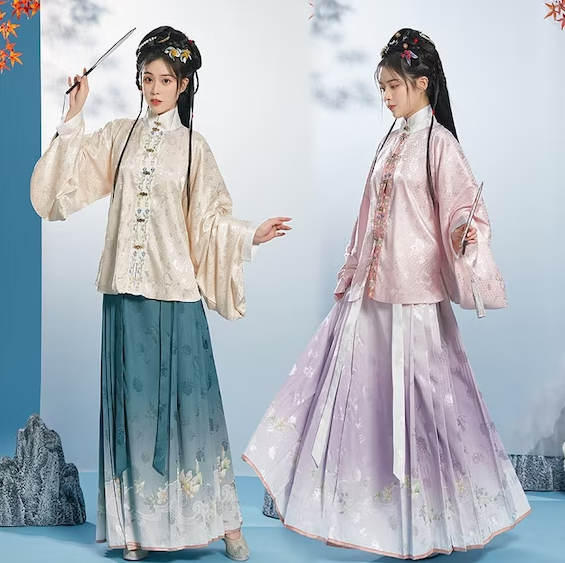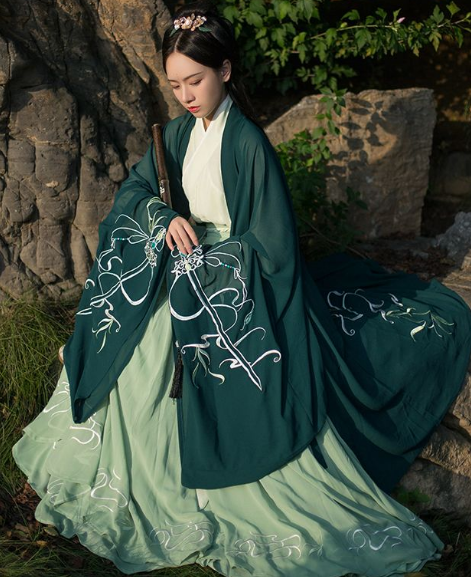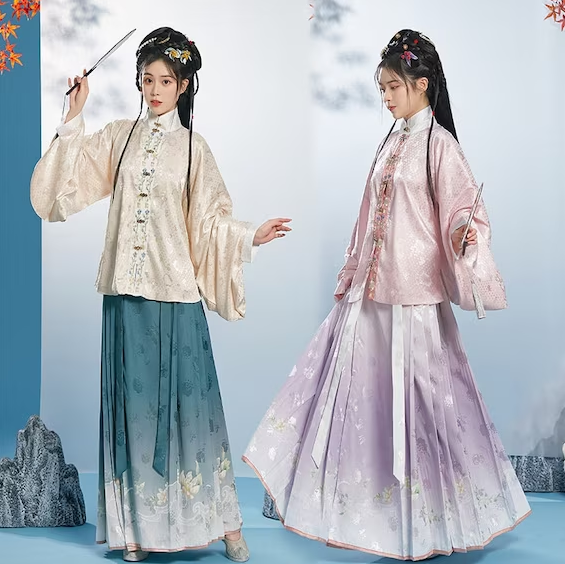Introduction to Chinese Court Attire
The Historical Evolution of Court Costumes
Ancient China’s court costumes reflect a rich tapestry of history. Each dynasty, from Shang to Qing, introduced distinct styles. The Tang dynasty, for instance, is famous for its Silk Road-inspired vibrant garments. Song dynasty fashion favored understated elegance. By the Ming era, the elaborate Dragon robe became an imperial symbol. The Qing dynasty then popularized the ‘Changpao’ and ‘Qipao’.
Significance of Dress in the Chinese Imperial Court
Court attire in ancient China conveyed social hierarchy vividly. Emperors often wore yellow, representing the earth and centrality, tying back to cosmological beliefs. Dragons adorned imperial robes, symbolizing authority. Strict dress codes dictated the number of embroidered creatures, the hat’s pearls, and belt width. These elements ensured a clear display of rank, aligning with the Confucian value of social order.

The Hierarchical Nature of Court Attire
Dress Codes According to Rank and Status
In ancient China, every garment signified a person’s rank in the strict social ladder. Emperors, for example, exclusively wore robes with nine dragons, while lower ranks had fewer dragons. Ministers and generals had specific hat designs that denoted their office. The number of birds or other insignias on a courtier’s attire pinpointed their exact rank within the governmental hierarchy.
The detail was key; even the length of a sleeve or the pattern of a hem could signal a person’s official capacity. The system was so precise that it could determine a person’s rank at a glance.
Colors and Designs: Symbols of Power and Position
Colors and designs in court costumes were not mere fashion choices; they were laden with symbolism. The color yellow, reserved for the emperor, represented the sun and was considered the center of the universe, as per traditional Chinese cosmology. Black and red were typically associated with high-ranking officials, symbolizing their proximity to the throne.
Designs, too, carried weight. Dragons with five claws were exclusive to the emperor, while four-clawed dragons adorned the garments of princes and certain high officials. Peonies, symbolizing wealth and honor, often featured on the robes of the wealthy. Every stitch carried a message, and every color a connotation of power and position.
Imperial Regalia and Accessories
The Emperor’s Dragon Robe and Crown
The emperor’s dragon robe, or ‘long pao’, was a marvel of textile artistry, often made with the finest silk and gold thread. This robe featured nine dragons, the most sacred number, embodying the emperor’s supreme power. Every dragon was meticulously embroidered, with precise stitches and vibrant colors that took artisans years to complete.
The emperor’s crown, known as the ‘mianguan’, had twelve beads hanging from it, representing the twelve months and the Chinese zodiac. Made with intricate metalwork and set with pearls and jade, it symbolized the emperor’s connection to heaven and earth.
Ornaments and Accessories for Royalty and Nobility
Royalty and nobility also had their unique accessories, each with its own meaning. Princes wore belts with special buckles, indicating their lineage and right to rule. High-ranking ladies often carried delicate fans made of feathers or silk, which were not only status symbols but also artworks.
Noblewomen adorned themselves with exquisite jewelry such as hairpins made of gold and decorated with precious stones like pearls and kingfisher feathers, reflecting both wealth and taste. These accessories went beyond mere adornment; they were integral to the wearer’s social identity.
Fabrics and Materials Used in Court Costumes
Silk, Satin, and Brocade: Textiles Fit for Royalty
The Chinese court exclusively used silk, satin, and brocade for royal garments. Silk, esteemed for its texture and sheen, often came from the finest silkworms, cultivated under strict conditions. A single robe might require hundreds of meters of silk, making it a symbol of opulence and power.
Brocade, a rich fabric woven with a raised pattern, often gold or silver, was typical for ceremonial attire. Weavers incorporated complex designs, such as dragons and phoenixes, into the brocade, using specialized looms that demanded high skill and time, thus increasing the fabric’s value and prestige.
Precious Stones and Metals: Embellishing the Elite
Court costumes often featured embellishments with precious stones and metals, signifying status. Artisans would intricately inlay jade, known for its purity and durability, into belts and headdresses. Pearls, valued for their luster and roundness, frequently adorned crowns and robes, indicating nobility.
Gold threads were essential for embroidery, giving garments a majestic glow. A single robe might use threads drawn from several ounces of gold, reflecting the wearer’s wealth and position. Silver, though less common than gold, was also a preferred material for accessories and thread, adding a subtle elegance to the attire.
Rituals and Ceremonies: Dressing for the Occasion
Wedding and Coronation Attires
For weddings, brides and grooms wore elaborate garments signifying their new union. Brides might wear red, a color symbolizing joy and good fortune, with phoenix embroidery representing femininity. Grooms often chose darker colors with dragon motifs, embodying strength and male vigor. Coronation robes were even more magnificent, decked in imperial yellow with nine dragons, displaying the emperor’s new-found sovereignty.
The materials and designs used in these attires were chosen to ensure prosperity and success, with no expense spared, often costing a small fortune, demonstrating the value placed on such life-changing events.
Funeral and Ancestral Worship Garments
Funeral attire diverged greatly, favoring somber colors like white, blue, or black, avoiding the ostentatious to honor the deceased. Mourners wore hemp cloth robes, indicating their grief and the temporary renouncement of luxury. Ancestral worship garments, on the other hand, were more formal, typically featuring muted tones and conservative designs to show respect for the ancestors.
These costumes often contained symbols like cranes or turtles, denoting longevity and wisdom, to honor the life and virtues of the departed. The cost of these garments varied, reflecting the social status of the wearer and the significance of the ceremony.

Preservation and Influence on Modern Fashion
Museum Collections and Conservation Efforts
Museums around the world treasure ancient Chinese court costumes, often highlighting them as centerpieces. The Metropolitan Museum of Art and the Palace Museum in Beijing invest heavily in conservation efforts, allocating substantial budgets to maintain these textiles’ integrity. They face challenges like fabric deterioration and color fading, addressing them through controlled environments and meticulous restoration work.
Conservation specialists labor for hundreds of hours on a single garment, employing both traditional techniques and modern technology to preserve these pieces for posterity.
Court Costume Inspired Contemporary Fashion Trends
Modern fashion designers draw inspiration from the grandeur of Chinese court attire. They reimagine traditional silhouettes and embroidery in their collections, bringing a piece of history into contemporary style. Brands incorporate dragon and phoenix motifs into modern clothing, while colors like imperial yellow appear in fashion shows worldwide.
This fusion of ancient designs into modern wear not only honors cultural heritage but also impacts the fashion industry’s direction. It leads to unique collections that resonate with both history buffs and style connoisseurs, proving that the elegance of court costumes transcends time.








